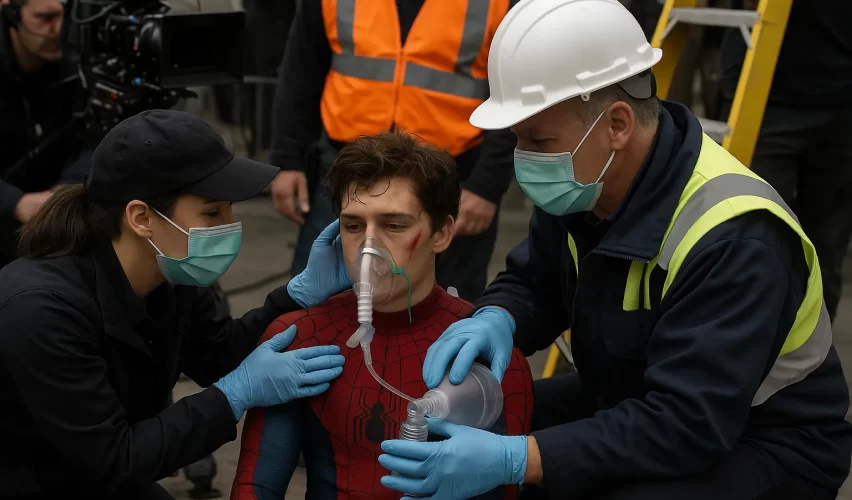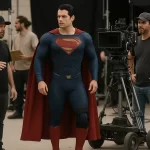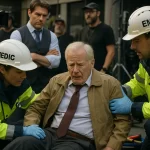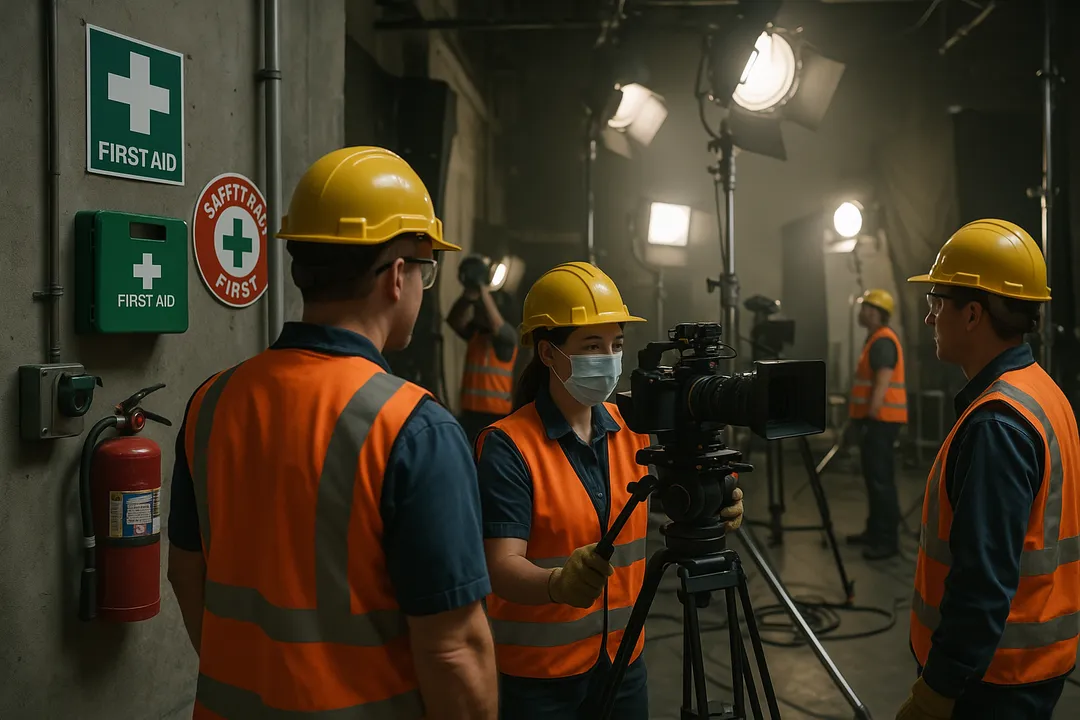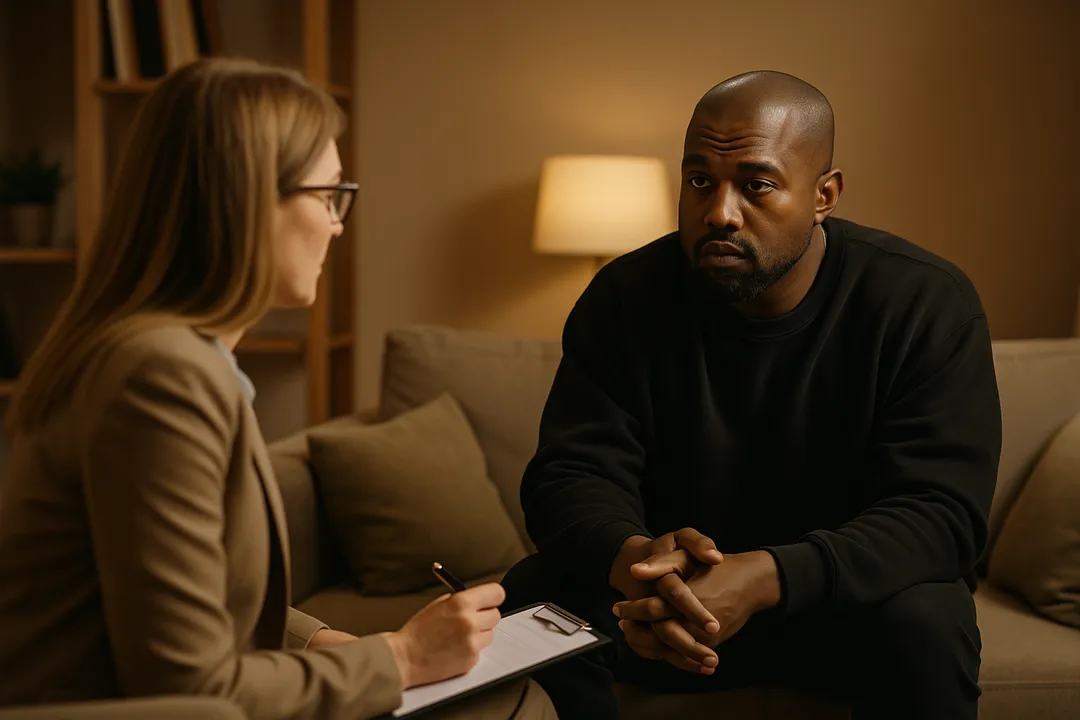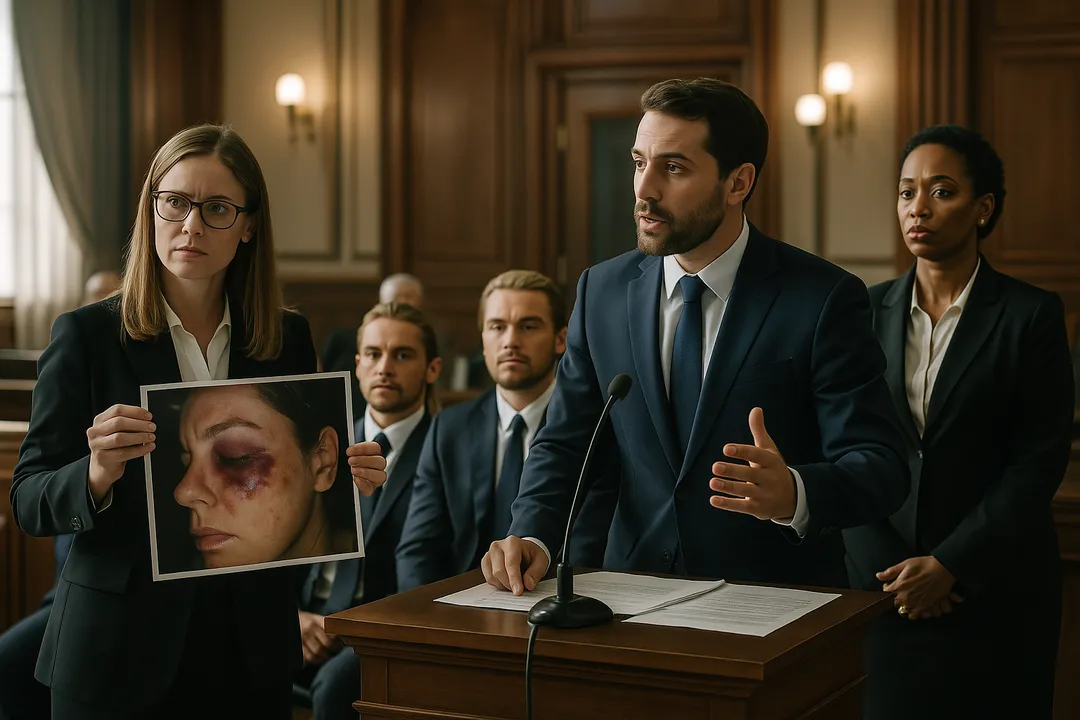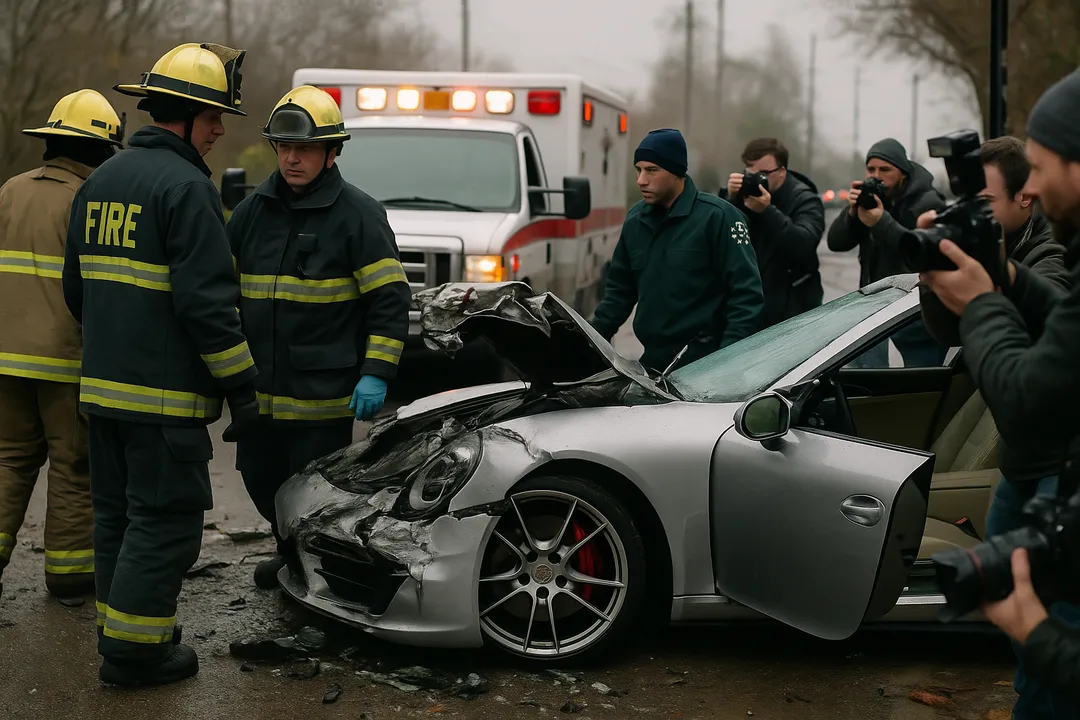The entertainment world was shaken when news broke that Tom Holland, the 28-year-old British actor beloved for his portrayal of Spider-Man, suffered a mild concussion while performing a stunt on the set of “Spider-Man: Brand New Day” in October 2024. The injury, which occurred during what was described as a routine action sequence, forced production to halt for over a week and cost the studio an estimated £10.5 million in delays and additional expenses [1].
Holland’s concussion represents more than just another celebrity injury; it highlights the ongoing safety challenges in modern film production, particularly for superhero movies that demand increasingly complex and dangerous stunts. The incident has reignited discussions about actor safety protocols, the use of stunt doubles versus celebrity performers, and the financial and legal implications when major stars are injured during production.
The timing of Holland’s injury is particularly significant as it comes at a crucial point in the Spider-Man franchise’s development. “Spider-Man: Brand New Day” represents the fourth installment in the highly successful series, with Holland reprising his role as Peter Parker in what many consider to be the most physically demanding entry yet. The film’s production schedule, already tight due to Marvel’s interconnected cinematic universe timeline, faced significant disruption as medical professionals assessed the severity of Holland’s head injury and determined his fitness to return to work.
This incident also brings renewed attention to the broader issue of celebrity injuries in action films, a topic we’ve extensively covered in our analysis of On-Set Accidents and Film Safety Protocols. The entertainment industry has made significant strides in improving safety standards over the past decade, but high-profile injuries like Holland’s demonstrate that risks remain inherent in action filmmaking, particularly when A-list actors insist on performing their own stunts.
The financial implications of Holland’s injury extend far beyond immediate medical costs. Production delays on major studio films can cost hundreds of thousands of dollars per day, affecting not only the primary production but also post-production schedules, marketing campaigns, and release dates. Insurance companies that cover celebrity injuries are increasingly scrutinizing safety protocols and may require additional precautions or higher premiums for productions involving high-risk stunts.
The Incident: What Happened on Set
According to sources close to the production, Tom Holland’s concussion occurred during the
filming of a complex action sequence that required him to perform aerial maneuvers characteristic of Spider-Man’s web-slinging abilities. The stunt, which involved Holland being suspended on cables and performing rapid directional changes while “swinging” between practical set pieces, went wrong when a cable mechanism malfunctioned, causing the actor to strike his head against a concrete pillar [2].
Witnesses on set described the incident as occurring in a matter of seconds, with Holland initially appearing dazed but conscious after the impact. The production’s on-set medical team immediately responded, following established protocols for potential head injuries. Holland was kept conscious and monitored for signs of serious neurological damage while emergency medical services were contacted.
The decision to transport Holland to a nearby London hospital was made as a precautionary measure, given the serious nature of head injuries and the potential for delayed symptoms to manifest. Medical professionals on set recognized that concussions can present with symptoms that develop hours or even days after the initial impact, making immediate comprehensive medical evaluation crucial for proper diagnosis and treatment planning.
The stunt that led to Holland’s injury was reportedly one that he had performed successfully multiple times during rehearsals and previous takes. This fact underscores the unpredictable nature of film production accidents, where even well-rehearsed and seemingly safe actions can result in serious injuries due to equipment failure, human error, or unforeseen circumstances.
Production sources indicate that the cable system involved in the accident had been inspected and approved by certified safety coordinators earlier that day. The malfunction appears to have been caused by a mechanical failure in one of the tension-adjustment mechanisms, which caused Holland’s trajectory to deviate from the planned path and bring him into contact with the set structure.
The immediate response to Holland’s injury followed industry-standard protocols established by organizations like the Screen Actors Guild and the Health and Safety Executive in the UK. Production was immediately halted, the accident scene was secured for investigation, and all personnel involved in the stunt were interviewed to determine the cause of the equipment failure and identify any procedural issues that may have contributed to the accident.
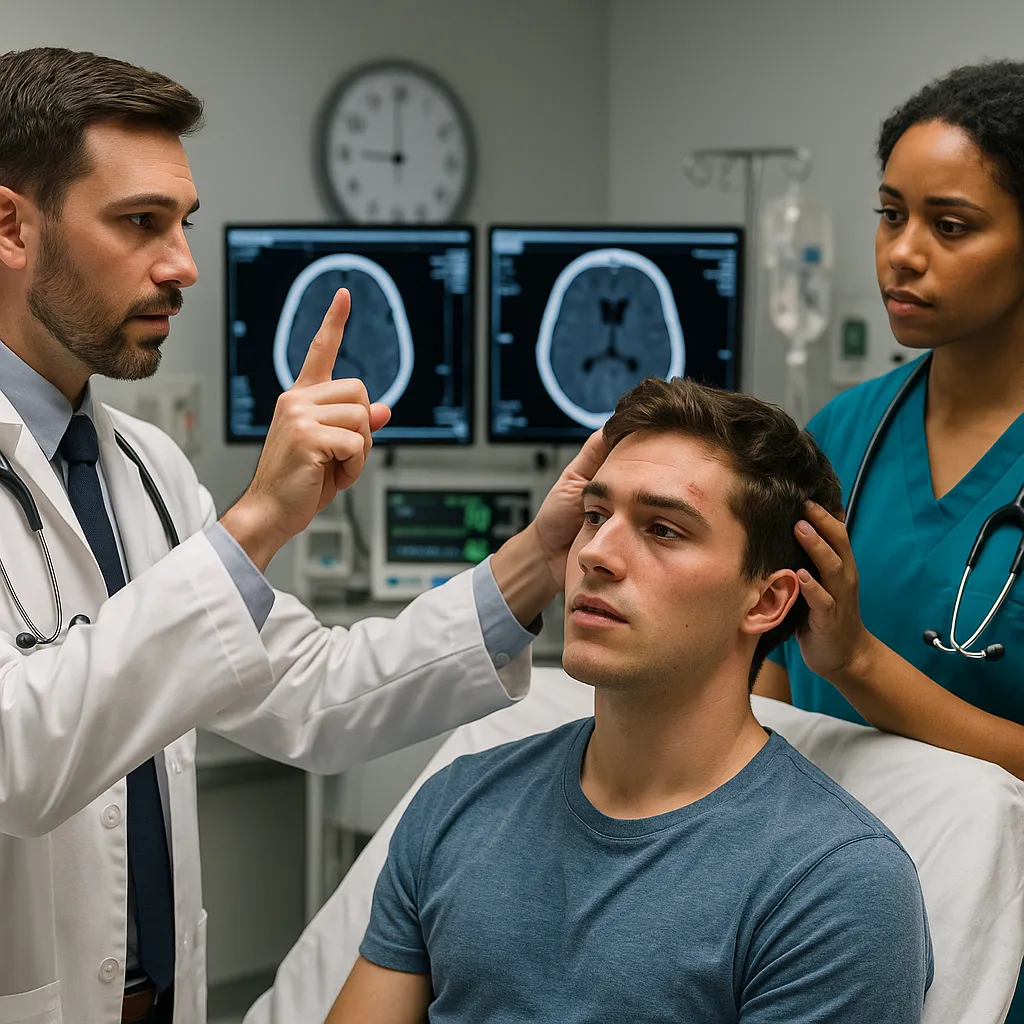
Medical Assessment and Concussion Diagnosis
Following his transport to the hospital, Tom Holland underwent comprehensive neurological evaluation to assess the extent of his head injury and determine the appropriate course of treatment. The medical team’s initial assessment confirmed that Holland had sustained a mild concussion, also known as a mild traumatic brain injury (mTBI), which required careful monitoring and a structured recovery protocol [3].
Concussions are among the most common injuries in film production, particularly in action sequences, but they are also among the most serious due to their potential for long-term neurological consequences. The brain injury that Holland sustained involved temporary disruption of normal brain function, likely caused by the rapid acceleration and deceleration of his head during the impact with the set structure.
Medical professionals treating Holland would have conducted a series of standardized assessments to evaluate his cognitive function, memory, balance, and neurological responses. These evaluations typically include the Glasgow Coma Scale, cognitive testing, and imaging studies such as CT scans or MRI to rule out more serious brain injuries like hemorrhaging or structural damage.
The classification of Holland’s injury as a “mild” concussion does not diminish its seriousness or potential impact on his health and career. Mild concussions can still result in significant symptoms including headaches, dizziness, confusion, memory problems, and sensitivity to light and sound. These symptoms can persist for days, weeks, or in some cases, months, depending on the individual’s recovery process and adherence to medical recommendations.
The medical team’s decision to keep Holland under observation for several hours following the injury reflects the standard of care for concussion management. Healthcare providers needed to monitor for signs of complications such as intracranial bleeding or increased intracranial pressure, which can be life-threatening if not promptly identified and treated.
Recovery protocols for concussion typically involve both physical and cognitive rest during the acute phase, followed by gradual return to normal activities as symptoms improve. For an actor like Holland, whose profession requires memorizing lines, performing complex physical movements, and working under bright lights, the recovery process must be carefully managed to prevent symptom exacerbation and ensure complete healing.
Production Impact and Financial Consequences
The immediate halt to “Spider-Man: Brand New Day” production following Tom Holland’s concussion created a cascade of financial and logistical challenges that extended far beyond the initial medical emergency. Industry sources estimate that the week-long production delay cost Sony Pictures and Marvel Studios approximately £10.5 million, encompassing not only the direct costs of idle cast and crew but also the complex financial implications of rescheduling a major studio production [4].
The financial impact of celebrity injuries on film productions has become increasingly significant as production budgets have grown and schedules have become more tightly integrated with broader cinematic universe planning. Modern superhero films operate on budgets that can exceed $200 million, with daily production costs often reaching hundreds of thousands of dollars when accounting for cast salaries, crew wages, equipment rental, location fees, and post-production scheduling.
The specific costs associated with Holland’s injury-related delay included maintaining the large crew on standby, securing and paying for continued use of filming locations, keeping expensive equipment rentals active, and managing the complex logistics of rescheduling scenes that involved multiple cast members with conflicting availability. Additionally, the production faced costs related to the investigation of the accident, implementation of enhanced safety measures, and potential modifications to planned stunts.
Insurance considerations played a crucial role in managing the financial impact of the production delay. Major film productions typically carry comprehensive insurance policies that cover various scenarios including cast illness or injury, but the specific terms and coverage limits can significantly affect the studio’s financial exposure. The insurance investigation process itself can add additional delays and costs as insurers work to determine liability and coverage obligations.
The ripple effects of the production delay extended beyond the immediate filming schedule to affect post-production timelines, marketing campaigns, and potentially the film’s release date. Post-production facilities, visual effects companies, and marketing agencies all had to adjust their schedules to accommodate the delayed delivery of footage, creating additional costs and potential conflicts with other projects.
The incident also highlighted the importance of contingency planning in major film productions. Studios have increasingly developed detailed protocols for managing production disruptions, including pre-negotiated arrangements with key vendors, flexible scheduling agreements with cast and crew, and comprehensive risk assessment procedures that can help minimize the financial impact of unexpected events like celebrity injuries.

Legal and Insurance Implications
Tom Holland’s on-set concussion raises complex legal and insurance questions that extend far beyond the immediate medical and production concerns. The entertainment industry operates under a sophisticated framework of liability, insurance coverage, and contractual obligations designed to protect all parties involved in film production, but celebrity injuries can test the limits of these protections and create significant legal challenges [5].
The primary legal consideration in Holland’s case involves determining liability for the accident and the resulting damages. Initial investigations will focus on whether the equipment failure that caused the injury resulted from manufacturing defects, improper maintenance, inadequate safety protocols, or human error. Each of these potential causes carries different liability implications and could affect insurance coverage and potential legal claims.
Production companies typically carry multiple layers of insurance coverage designed to address various risks associated with film production. These policies often include general liability coverage, equipment insurance, cast insurance, and specialized coverage for high-risk activities like stunts. The specific terms of these policies, including coverage limits, deductibles, and exclusions, will determine how the costs associated with Holland’s injury are allocated among the various parties involved.
Cast insurance policies, which are specifically designed to cover the risks associated with celebrity injuries, typically include provisions for medical expenses, production delays, and potential replacement costs if an actor is unable to complete their role. However, these policies often contain detailed exclusions and requirements that can affect coverage, particularly for injuries that occur during high-risk activities like stunt work.
The contractual obligations between Holland, the production company, and various service providers also create legal complexities that must be carefully managed. Holland’s contract likely includes provisions addressing his obligations to perform stunts, the production company’s responsibility to provide a safe working environment, and the procedures to be followed in the event of injury or illness.
Workers’ compensation considerations may also apply, depending on the specific employment relationship between Holland and the production company and the jurisdiction in which the filming occurred. While major stars often work as independent contractors rather than employees, the specific terms of their engagement and the applicable laws can affect their rights to workers’ compensation benefits and the production company’s liability for workplace injuries.
The potential for third-party liability claims adds another layer of legal complexity to the situation. If the equipment failure that caused Holland’s injury resulted from defects in design or manufacturing, the production company and Holland may have claims against the equipment manufacturer or other parties in the supply chain. These claims could provide additional sources of recovery for damages but also create additional legal proceedings and potential complications.
Industry Safety Standards and Protocols
The entertainment industry has developed comprehensive safety standards and protocols over decades of filmmaking, but Tom Holland’s concussion demonstrates that even the most rigorous safety measures cannot eliminate all risks associated with action film production. The incident has prompted renewed examination of current safety practices and potential improvements that could better protect actors and crew members during dangerous stunts and action sequences.
Current industry safety standards are established through collaboration between various organizations including the Screen Actors Guild-American Federation of Television and Radio Artists (SAG-AFTRA), the Directors Guild of America, the International Alliance of Theatrical Stage Employees (IATSE), and regulatory agencies like the Occupational Safety and Health Administration (OSHA) in the United States and the Health and Safety Executive (HSE) in the United Kingdom.
These standards require comprehensive risk assessments for all potentially dangerous activities, mandatory safety briefings for cast and crew, the presence of qualified safety coordinators and medical personnel on set, and the use of appropriate safety equipment and procedures. For stunt work specifically, additional requirements include the use of certified stunt coordinators, detailed stunt planning and rehearsal procedures, and specialized safety equipment designed for the specific risks involved.
The investigation into Holland’s accident will likely focus on whether all applicable safety standards were followed and whether the current standards are adequate to address the specific risks associated with the type of stunt that led to his injury. This analysis may result in recommendations for enhanced safety protocols, improved equipment standards, or additional training requirements for personnel involved in stunt coordination and execution.
Technology has played an increasingly important role in improving film production safety, with innovations like computer-controlled cable systems, advanced protective equipment, and sophisticated monitoring systems helping to reduce the risks associated with dangerous stunts. However, the complexity of modern action sequences and the pressure to create increasingly spectacular visual effects can sometimes push the boundaries of what can be safely accomplished with current technology.
The balance between artistic vision and safety considerations remains a constant challenge in action film production. Directors and producers must weigh the creative benefits of practical stunts against the risks to cast and crew, while actors like Holland must decide how much personal risk they are willing to accept in pursuit of authentic performances. These decisions are influenced by factors including insurance requirements, legal obligations, and the personal preferences of the individuals involved.
Training and certification programs for stunt performers, safety coordinators, and other key personnel have become increasingly sophisticated in response to the growing complexity of modern film production. These programs emphasize not only technical skills but also risk assessment, emergency response procedures, and the importance of clear communication among all parties involved in dangerous sequences.
Recovery Process and Return to Work
Tom Holland’s recovery from his concussion follows established medical protocols for traumatic brain injury rehabilitation, but his status as a major film star adds unique complications and considerations to the standard treatment approach. The recovery process must balance the medical imperative for complete healing with the practical pressures of a major film production and the career implications of extended absence from work [6].
The initial phase of concussion recovery typically involves both physical and cognitive rest, designed to allow the brain to heal without the stress of normal activities that could exacerbate symptoms or delay recovery. For Holland, this meant not only avoiding physical activities but also limiting cognitive demands such as reading scripts, memorizing lines, or participating in production meetings that could strain his recovering brain function.
Medical monitoring during the recovery process involves regular neurological assessments to track symptom improvement and identify any complications that might arise. Healthcare providers use standardized evaluation tools to measure cognitive function, balance, reaction time, and other indicators of brain health. The frequency and intensity of these assessments are adjusted based on the patient’s progress and the specific requirements of their planned return to work activities.
The gradual return to activity phase of concussion recovery is particularly complex for actors involved in physically demanding roles like Spider-Man. Medical professionals must carefully balance the need for progressive activity increases with the specific demands of film production, including long working hours, bright lights, complex choreography, and the cognitive demands of performance.
Occupational therapy and specialized rehabilitation services may be recommended to help Holland regain the specific skills needed for his professional activities. This could include balance training, coordination exercises, cognitive rehabilitation, and gradual exposure to the types of stimuli he will encounter on set, such as bright lights and loud sounds that can trigger concussion symptoms.
The decision about when Holland can safely return to full production activities involves collaboration between his medical team, the production’s medical advisors, insurance company representatives, and potentially independent medical examiners. This process ensures that all parties have confidence in his ability to perform safely and effectively while minimizing the risk of re-injury or complications.
Communication with fans and media during the recovery process requires careful management to balance transparency about Holland’s condition with privacy considerations and the need to maintain confidence in the production. The actor’s social media presence and public statements must be coordinated with medical recommendations and production company interests to ensure consistent and appropriate messaging.
Fan Response and Social Media Impact
The announcement of Tom Holland’s concussion generated an immediate and overwhelming response from fans worldwide, demonstrating the powerful emotional connection between the actor and his global audience. Social media platforms became venues for expressions of concern, support, and well-wishes, while also serving as spaces for discussion about film safety and the risks that actors face in pursuit of entertainment [7].
The initial news of Holland’s injury spread rapidly across social media platforms, with hashtags like #GetWellTomHolland and #SpiderManSafety trending within hours of the announcement. Fans shared personal stories of their own concussion experiences, creating a community of support and understanding around the challenges of brain injury recovery. This organic fan response highlighted the genuine affection and concern that audiences feel for Holland as both a performer and a person.
The social media response also included significant discussion about the broader issues raised by Holland’s injury, including the pressure on actors to perform their own stunts, the adequacy of current safety protocols, and the balance between authentic action sequences and performer safety. These conversations reflected a growing awareness among fans of the real risks and challenges involved in creating the entertainment they enjoy.
Celebrity injury news coverage in the digital age presents unique challenges and opportunities, as we’ve explored in our analysis of The Impact of Social Media on Celebrity Injury News Coverage. The speed at which information spreads can create pressure for rapid updates and statements, but it also allows for direct communication between celebrities and their fans without traditional media intermediaries.
Holland’s own social media presence during his recovery became a carefully managed balance between maintaining connection with fans and following medical recommendations for cognitive rest. His eventual statement about the injury, expressing gratitude for fan support while emphasizing his commitment to recovery, was widely praised for its authenticity and responsibility.
The fan response to Holland’s injury also reflected broader cultural shifts in attitudes toward mental health and brain injuries. Rather than minimizing the significance of a “mild” concussion, many fans demonstrated understanding of the serious nature of brain injuries and the importance of proper recovery time. This response suggests growing public awareness of concussion risks and recovery needs.
The international nature of Holland’s fan base meant that news of his injury and recovery updates were followed closely across multiple time zones and cultures. This global attention added complexity to the communication strategy around his injury, as messages needed to be appropriate and understandable across diverse audiences with varying levels of familiarity with medical terminology and film production processes.
Career Implications and Future Considerations
Tom Holland’s concussion and the resulting production delays raise important questions about the long-term implications for his career trajectory and his approach to performing stunts in future projects. As one of Hollywood’s most bankable young stars, Holland’s injury experience may influence not only his own career decisions but also industry-wide practices regarding celebrity involvement in dangerous action sequences.
The immediate career implications of Holland’s injury include potential impacts on his current and future film commitments. While “Spider-Man: Brand New Day” production was able to resume after his recovery, the delay may have created scheduling conflicts with other projects or promotional obligations. The entertainment industry operates on tightly coordinated schedules, and disruptions to one project can have cascading effects on an actor’s entire career timeline.
Holland’s experience with concussion may also influence his willingness to perform his own stunts in future projects. Many actors who experience serious injuries during stunt work become more cautious about taking physical risks, opting to use stunt doubles for dangerous sequences or negotiating for enhanced safety measures in their contracts. This shift in approach can affect both the authenticity of action sequences and the actor’s marketability for certain types of roles.
The incident may also impact Holland’s insurance costs and contractual terms for future projects. Insurance companies that provide coverage for celebrity injuries often adjust their rates and requirements based on an actor’s injury history, and production companies may require additional safety measures or medical clearances for actors who have previously sustained serious injuries.
From a broader career perspective, Holland’s handling of his injury and recovery may actually enhance his reputation and marketability. His responsible approach to recovery, transparent communication with fans, and commitment to safety could position him as a mature and professional performer who prioritizes long-term health over short-term career pressures.
The experience may also open new opportunities for Holland to become an advocate for improved safety standards in film production. Actors who have experienced serious injuries often become influential voices in discussions about industry safety practices, and Holland’s high profile and articulate communication style could make him an effective spokesperson for enhanced safety measures.
The long-term health implications of Holland’s concussion will require ongoing monitoring and may influence his career longevity. While most people recover completely from mild concussions, some individuals experience persistent symptoms or increased vulnerability to future brain injuries. These considerations may affect Holland’s career planning and the types of roles he chooses to pursue as he ages.
Industry Response and Safety Improvements
The entertainment industry’s response to Tom Holland’s concussion has been swift and comprehensive, reflecting both the high-profile nature of the incident and the industry’s ongoing commitment to improving safety standards for all production personnel. The accident has prompted renewed discussions about current safety protocols and potential improvements that could better protect actors and crew members during dangerous filming activities.
Major studios and production companies have used Holland’s injury as an opportunity to review and potentially enhance their existing safety procedures. This review process typically involves collaboration between studio executives, insurance representatives, safety coordinators, and medical professionals to identify potential improvements in equipment, procedures, or training that could reduce the risk of similar accidents in the future.
The Screen Actors Guild and other industry organizations have also responded to the incident by emphasizing the importance of existing safety protocols and potentially developing new guidelines specific to the types of stunts that led to Holland’s injury. These organizations play a crucial role in establishing industry-wide standards and ensuring that safety considerations are given appropriate priority in production planning.
Equipment manufacturers and safety technology companies have taken note of the accident as well, using it as motivation to develop improved safety systems and protective equipment. The film industry’s demand for increasingly sophisticated and dangerous stunts creates ongoing opportunities for innovation in safety technology, and high-profile accidents like Holland’s can accelerate the development and adoption of new safety solutions.
The incident has also prompted discussions about the role of insurance companies in promoting safety improvements. Insurers have significant influence over production practices through their coverage requirements and premium structures, and they may use incidents like Holland’s injury to justify enhanced safety requirements or to incentivize the adoption of improved safety technologies.
Training and certification programs for stunt coordinators, safety personnel, and other key production roles may also be enhanced in response to Holland’s accident. These programs play a crucial role in ensuring that personnel have the knowledge and skills needed to identify and manage safety risks, and ongoing improvements in training can help prevent future accidents.
The broader entertainment industry has also used Holland’s injury as an opportunity to discuss the balance between practical stunts and digital effects in creating action sequences. While practical stunts often provide more authentic and visually compelling results, they also carry inherent risks that digital effects can eliminate. The industry continues to evolve in its approach to this balance, with safety considerations playing an increasingly important role in production decisions.
Conclusion
Tom Holland’s concussion during the filming of “Spider-Man: Brand New Day” serves as a sobering reminder of the real risks that actors face in pursuit of creating compelling entertainment for audiences worldwide. The incident highlights the complex intersection of artistic vision, commercial pressures, safety considerations, and personal responsibility that defines modern film production, particularly in the action genre where physical risks are inherent to the creative process.
The comprehensive response to Holland’s injury, from immediate medical care through production adjustments and industry-wide safety discussions, demonstrates the entertainment industry’s commitment to protecting its most valuable assets while continuing to push the boundaries of what is possible in action filmmaking. The estimated £10.5 million cost of the production delay underscores the significant financial stakes involved, while the global fan response reflects the deep emotional investment that audiences have in their favorite performers.
The legal and insurance implications of Holland’s injury illustrate the sophisticated risk management systems that have evolved to address the unique challenges of celebrity-driven film production. These systems, while complex, provide essential protections for all parties involved and help ensure that the financial consequences of accidents do not derail major productions or destroy careers.
Perhaps most importantly, Holland’s injury and recovery process have contributed to ongoing conversations about safety standards, risk assessment, and the balance between authentic performance and performer protection. The entertainment industry’s willingness to learn from incidents like this and continuously improve its safety practices is essential to protecting the health and careers of the talented individuals who bring our favorite stories to life.
The incident also reinforces the importance of comprehensive medical care and responsible recovery practices for concussion and other brain injuries. Holland’s adherence to medical recommendations and transparent communication about his recovery process provide a positive example for others facing similar challenges, whether in the entertainment industry or in everyday life.
As Holland continues his recovery and eventually returns to full production activities, his experience will likely influence not only his own career choices but also industry-wide practices regarding celebrity safety and risk management. The lessons learned from this incident will contribute to ongoing efforts to make film production safer for everyone involved, while still allowing for the creation of the spectacular entertainment that audiences expect and enjoy.
The entertainment industry’s response to Holland’s injury demonstrates that safety and creativity need not be mutually exclusive. Through continued innovation in safety technology, enhanced training programs, improved risk assessment procedures, and a culture that prioritizes the well-being of all production personnel, the industry can continue to push creative boundaries while protecting the health and safety of the talented individuals who make movie magic possible.
For more insights, explore our comprehensive articles on Celebrity Health Scares That Shook the World in 2025, Celebrity Lawsuit Trends in Injury Cases, and Mental Health Injuries and Celebrity Recovery.
Explore additional resources on Tom Holland Suffers Head Injury While Filming Spider-Man: Brand New Day – E! Online, Tom Holland Speaks Out After Suffering Concussion on Spider-Man Set – AOL, Tom Holland films intense Spider-Man scenes as production resumes – Daily Mail, and The latest update on Tom Holland’s injury situation – NewsBreak.


